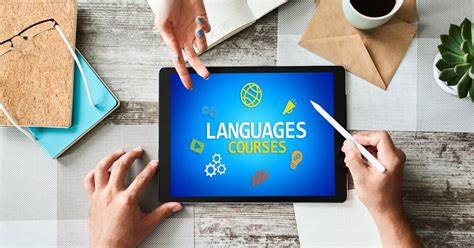In a diverse and culturally rich city like Agra, schools often cater to students from various linguistic backgrounds. As the world becomes increasingly interconnected, it’s essential for educational institutions to communicate effectively with all families, regardless of their native language. Creating a multi-language school website can significantly enhance accessibility, inclusivity, and engagement. However, budget constraints can often make this seem like a daunting task. Fortunately, there are several affordable solutions available for schools in Agra looking to build a multi-language website.

1. Content Management Systems (CMS)
Using a CMS is one of the most efficient ways to create a multi-language school website. Platforms like WordPress, Joomla, and Drupal offer built-in multi-language support or plugins that can facilitate translation. Here are some advantages of using a CMS:
- User-Friendly: These platforms are designed to be user-friendly, making it easy for school staff to update content without needing extensive technical knowledge.
- Cost-Effective: Many CMS options are open-source and free to use, significantly reducing initial costs.
- Plugin Availability: Plugins like WPML (WordPress Multilingual Plugin) or Polylang for WordPress allow for easy translation and language switching without excessive coding.
2. Professional Translation Services
While automatic translation tools like Google Translate can provide quick translations, they often lack the nuance and accuracy needed for educational content. Instead, consider hiring professional translation services. Many agencies offer affordable rates, especially for bulk translations. Here’s why professional services can be worth the investment:
- Quality Assurance: Professionals can ensure that the translations are accurate and culturally relevant, preventing misunderstandings.
- Language Variety: They can provide translations in multiple languages, catering to the diverse population of Agra.
- Consistency: Professional translators can maintain a consistent tone and style throughout the website.
3. Community Involvement
Engaging with the local community can be a valuable resource for creating a multi-language website. Consider the following approaches:
- Volunteer Translators: Reach out to parents or community members who are fluent in multiple languages. They may be willing to volunteer their time to translate content for the school website.
- Partnerships with Language Institutions: Collaborate with local language schools or universities that might offer translation services as part of student projects or internships.
4. Utilizing Language Switcher Plugins
Many website builders and CMS platforms offer language switcher plugins that allow users to easily toggle between languages. This feature enhances user experience and ensures that all visitors can navigate the website in their preferred language. Here are some popular options:
- WPML: For WordPress users, this plugin is a robust solution for creating multi-language websites.
- Weglot: This plugin offers an easy setup process and can automatically translate your content while allowing manual edits.
- GTranslate: This plugin provides automatic translation options, allowing schools to cater to multiple languages without extensive manual effort.
5. Responsive Design for Mobile Users
Given the widespread use of smartphones, it’s crucial that the school website is mobile-friendly. Many website builders, such as Wix or Squarespace, offer responsive templates that adjust to different screen sizes. A mobile-responsive design ensures that all users, regardless of the device they are using, have a seamless experience. This is particularly important for parents who may rely on their phones for quick access to information.
6. Social Media Integration
Many parents and students engage more with social media than with traditional websites. By integrating social media channels into the school’s online presence, schools can reach a broader audience. Consider creating multi-language posts on platforms like Facebook and Instagram to keep families informed and engaged.
7. Continuous Improvement and Feedback
After launching the multi-language website, schools should seek feedback from parents and students to identify areas for improvement. This can be done through surveys or focus groups. Continuous improvement ensures that the website remains relevant and effective in meeting the needs of the community.
Conclusion
Building a multi-language school website in Agra doesn’t have to be an expensive endeavor. By leveraging affordable solutions such as CMS platforms, professional translation services, community involvement, and user-friendly design, schools can create an inclusive and accessible online presence. This effort not only enhances communication with diverse families but also enriches the educational experience for all students. As Agra’s schools embrace technology and inclusivity, a multi-language website will become an invaluable asset in fostering a supportive and engaged school community.


No responses yet